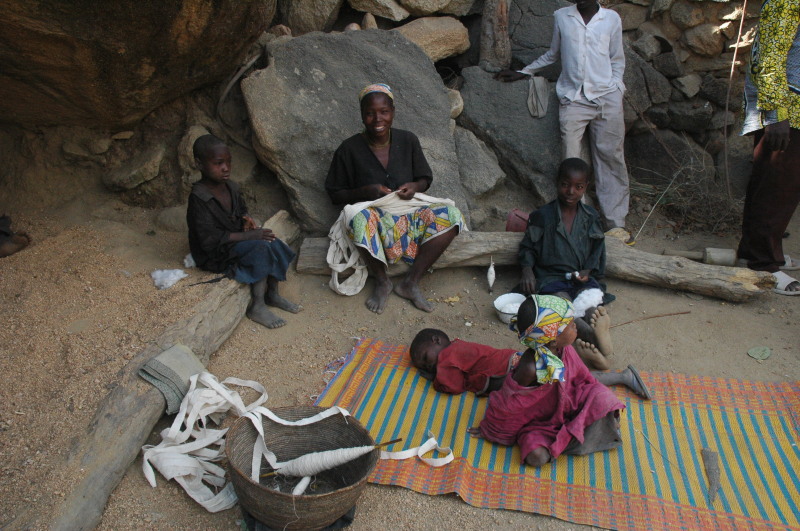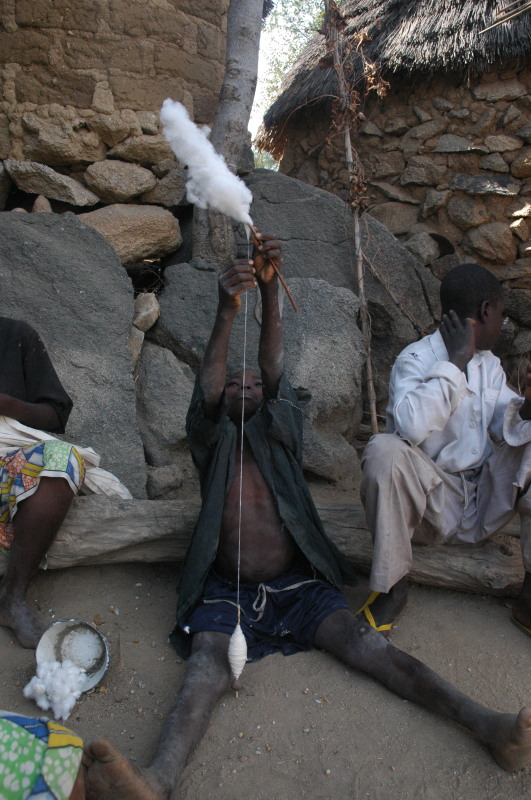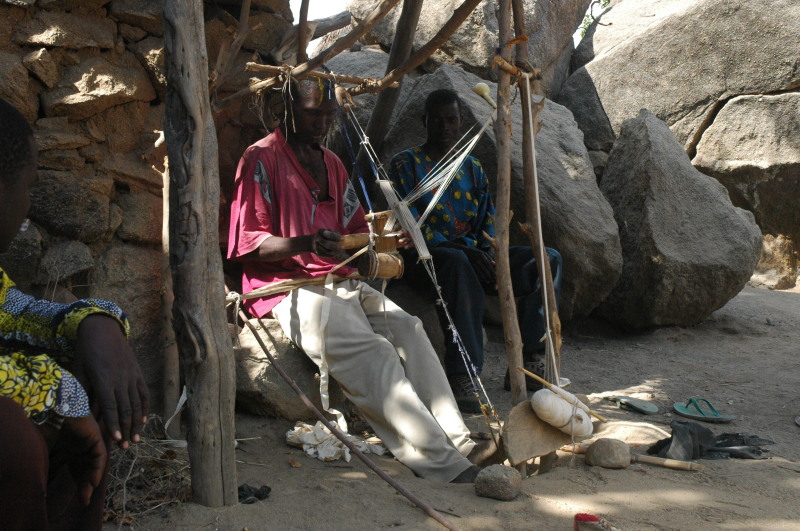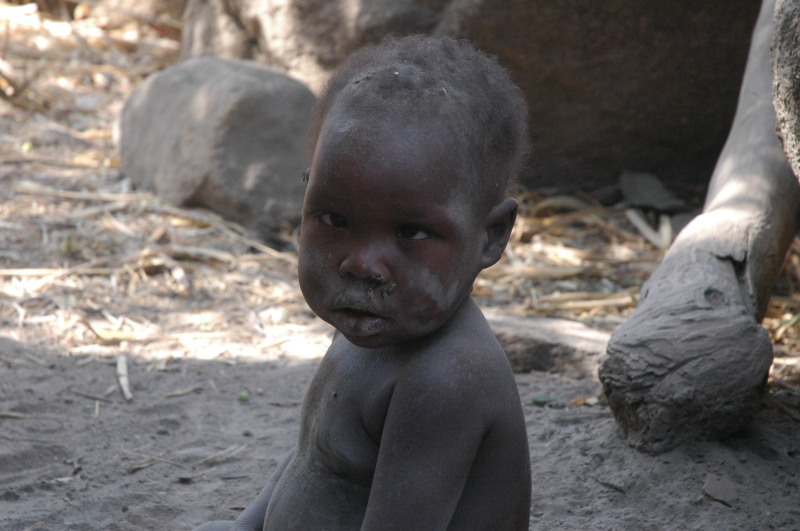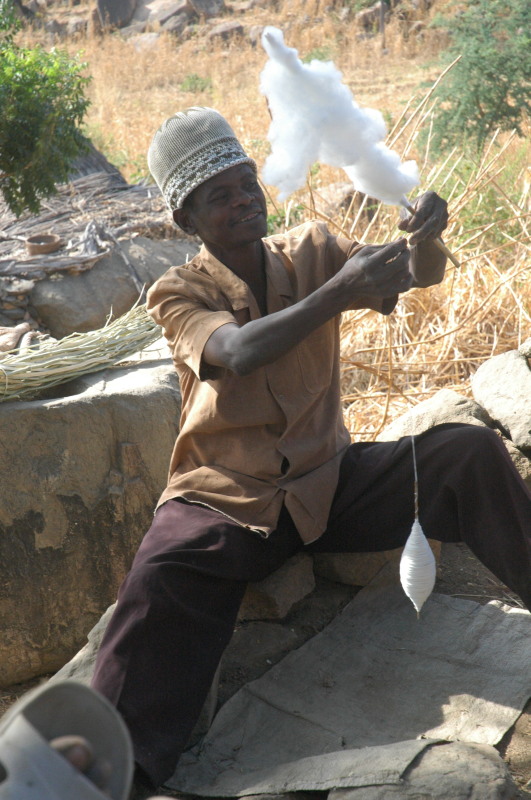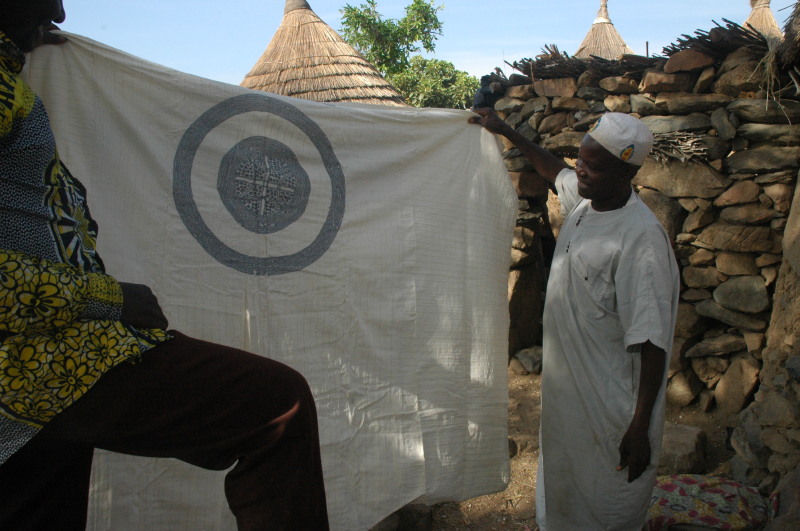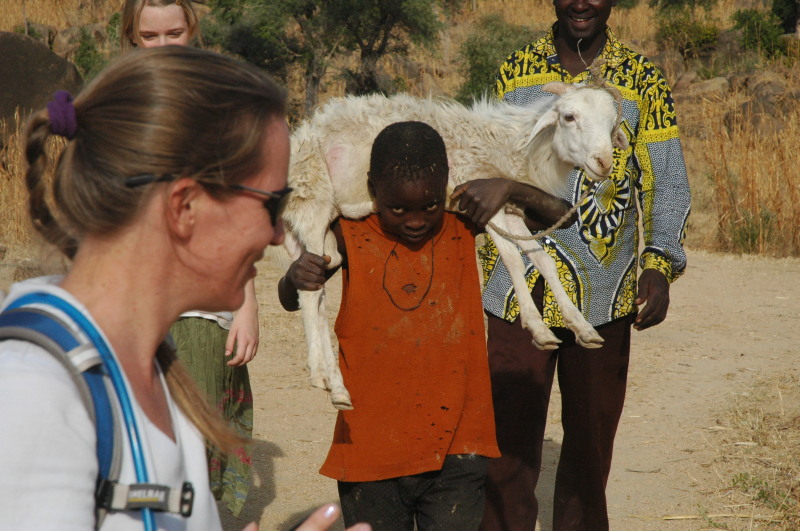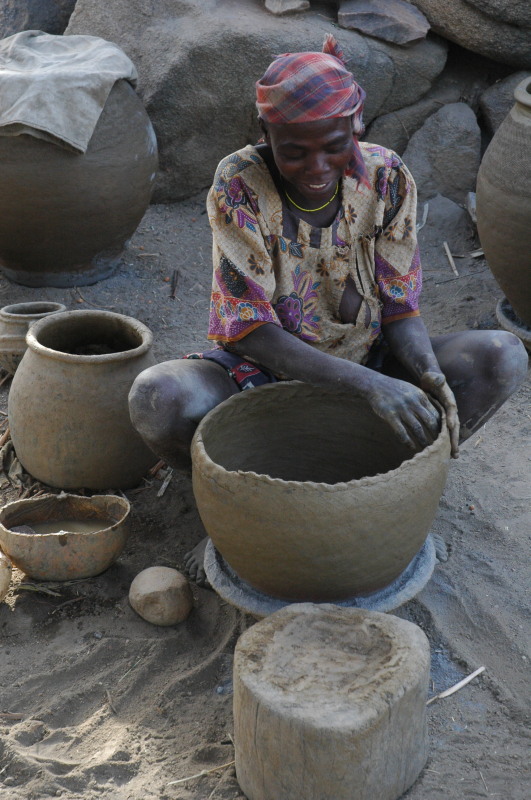Since the last several Shanksteps we have sent out have been of a serious nature, I thought I’d write about some fun experiences we’ve had lately.Every time a case of polio is found in our region, the whole of Koza is revaccinated against this dreaded disease. Because the vaccine is given orally, local people can be trained to give it, and they go house to house in EVERY part of Koza to vaccinate ALL children under the age of five. During the three day vaccination campaign, supervisors also travel around to make sure that every child in every neighborhood receives their vaccine and that it is being distributed correctly. Each house is markedwith the number of children living there under age five, and the number actually vaccinated at the time of visit. It is a huge undertaking, but very effective. I was one of the supervisors, and I requested to supervise a region in the mountains (as I love the mountains).I was directed to an area of Koza that I have never seen before. To get there, it is best to take a motorcycle to the base of the mountains (so you have an easier way to get home at the end of the day). After that it is all on foot. The trail up the mountain is somewhat strenuous. I needed to use both feet and hands in several parts (probably because I’m a weak American…). Anyhow, once partway up the mountain, the view is absolutely incredible. At the top of the mountain range, the land dipsdown a bit and there is a fairly large village nestled among the rocky outcroppings. In all, I had 5 cartiers (or neighborhoods) to survey. We (me and a translator, Dougdje) decided to go to the farthest area first. What a walk. We wound our way up the side of another mountain and ended up pulling ourselves up over the outer wall of a house (hut). We had found the center of this cartier. The people up there were incredibly nice. No one really stared. No one followed us gawking. No one askedfor money or gifts. They were just hospitable, simple people. They explained to me the different activities they were involved in. One group was shaving the bark off of dried branches that would later be ground into a fine powder to be made into sauce. I was able to see a man spinning cotton yarn from the cotton he had grown and just recently harvested. I saw the tiny loom only 2 inches wide that the local people weave on. I watched as the women and girls of the village sewed these pieces offabric together to make clothing. One of the women brought out the finished product, a beautiful gandara (local long robe). This is given by the groom-to-be to his future father-in-law as part of the dowry. This is a very special piece of clothing that is only worn for the highest of holidays, and as a burial shroud.  After seeing all of these interesting things, I did a little bit of surveillance in this village for the vaccination program. We then continued on to another cartier where we sawthe “forgerons” (translated blacksmith, but in this society are the ones to make the axes, pottery, bury the dead, and deliver the babies…). They were in the process of making the large clay pots that hold water, which sit at the entrance to every house. The forgerons are considered a “lower” class, and no self-respecting Mafa is allowed to voluntarily mingle with these families. It is completely forbidden for marriage between a forgeron and non-forgeron. It was very interesting watching themmake these huge pots by hand (no potter’s wheel). We then continued on to visit the Lawan of this village. The Lawan is the highest-ranking political official for the region. He is a local man, chosen by the government. I chose to visit him just because I was “in the neighborhood” although his hut was way up the side of yet another mountain. I found a very nice man, surrounded by his five wives and some of their kids. He had grown up in that very house and counted 140 people in his “immediate”family. We visited for a while and upon leaving, he gave me the gift of a rooster. I told him that I would return to visit him with my family. After that we left the mountain for “civilization”. I had a wonderful day. Didn’t get much work done, but found a reason for being here in Cameroun.Last Wednesday, we decided to go up the mountain as a family. (Wednesday is our day off.) I wanted to show my family all of the things I had seen on the mountain. So Greg, Sarah, Katie (peace corps worker), Vambi (Camerounian friend and translator), and I went up the mountain for the “real” African experience. We were able to see a whole family in the process of making the clothing I had seen the previous time. This time I was able to see how the loom worked. They weave with 40 strings at atime, and they use their hands and feet to maneuver the loom and shuttle. In this particular family, two young boys spun the yarn, the father wove the fabric, and the wife and the daughter sewed the strips of fabric together to make the gandara. It was fascinating to watch. Then we went on the visit the Lawan. He was so surprised to see me return. He told our translator that he thought I was joking when I said that I would bring my family back to meet him. We talked with him for a while andthen, out of the door of his house he brought me a ram as a gift. I wanted to refuse it as this is a HUGE gift, but it would have been culturally inappropriate to do so. He said that because we didn’t come during mealtime, he felt that he had to give us some kind of food. So, we made a deal that the next time I visited, it would be only for a visit, not for food. I then decided to invite him to our house for lunch the following week. It was quite interesting walking down the mountain with aram that didn’t want to leave home. In the end we paid a young boy to carry the animal down off the mountain for us.Today the Lawan, his son, Dougdje, and Vambi came to our house for lunch. This was the first time that the Lawan has ever been inside a white man’s house, let alone eaten with one. I think he felt honored, but also somewhat uncomfortable here. We just have SO much, and they so little. For lunch we had planned to give him the “all American” meal of spaghetti, bread, and salad. We were advised, however, to have some kind of meat at the meal, as a vegetarian meal would not “honor” our guests.So, this morning, our cook whipped up a great meat dish in addition to spaghetti. It was very interesting watching the Lawan and his son eat here. They are completely unused to utensils and therefore ate with their hands (we had told them they could). I also think they had never had spaghetti before (kind of a weird food if it’s the first time you’ve ever seen it). We had a very nice visit, but it really opened my eyes again to how totally different our cultures are. I have become used to thepeople in the “city” of Koza, who have at least been influenced by Western culture. But the mountain people are still largely untouched by prior colonialism. What a breath of fresh air. I often think that with the good that western culture brought to Africa, came a whole lot of bad. I hope you’ve enjoyed this trip to the mountains with me. I will surely return when I can. —AudreyOh, by the way, during our dinner, we were discussing Camerounian delicacies. There is something called potasse that is made by slow cooking your cow feces for many hours. Then you filter water through what is left. Apparently it gives off a wonderful taste used for soups and sauces, not to mention that it is used to calm the stomach and intestines. (Now who was the first to think of doing that…?) The other side dish that was discussed is apparently only eaten at the big festivals when killinga goat or lamb. The goat is killed by cutting the jugular vein in the neck. The blood is collected and allowed to clot. Then it is mixed with the stool filled intestines (although now in the “city” the intestines are cleaned out). And voila, a tasty side dish, suitable for kids and adults alike. Take heart, most Christians no longer partake in this meal, although the ones we talked to said that it’s delicious…  